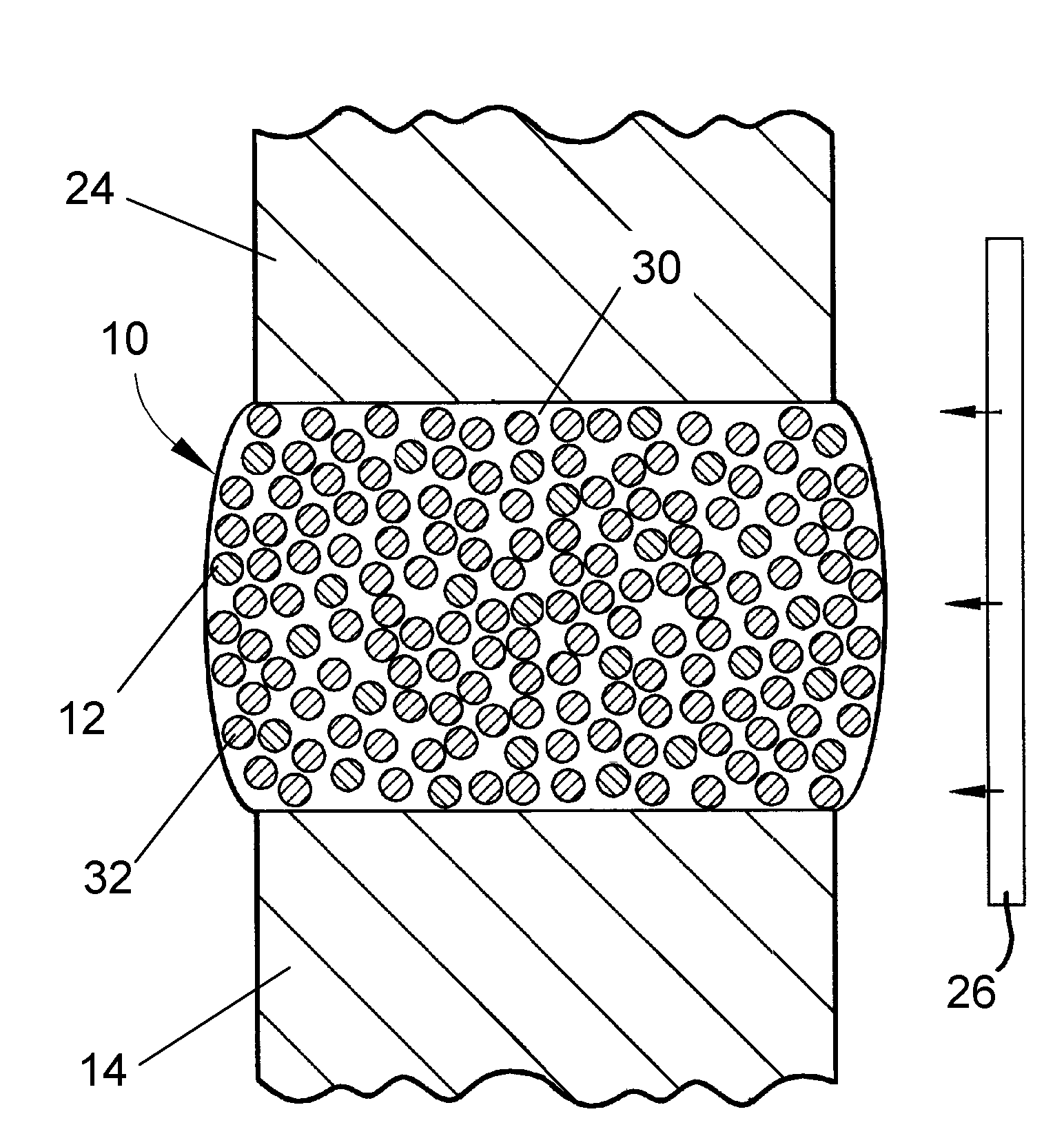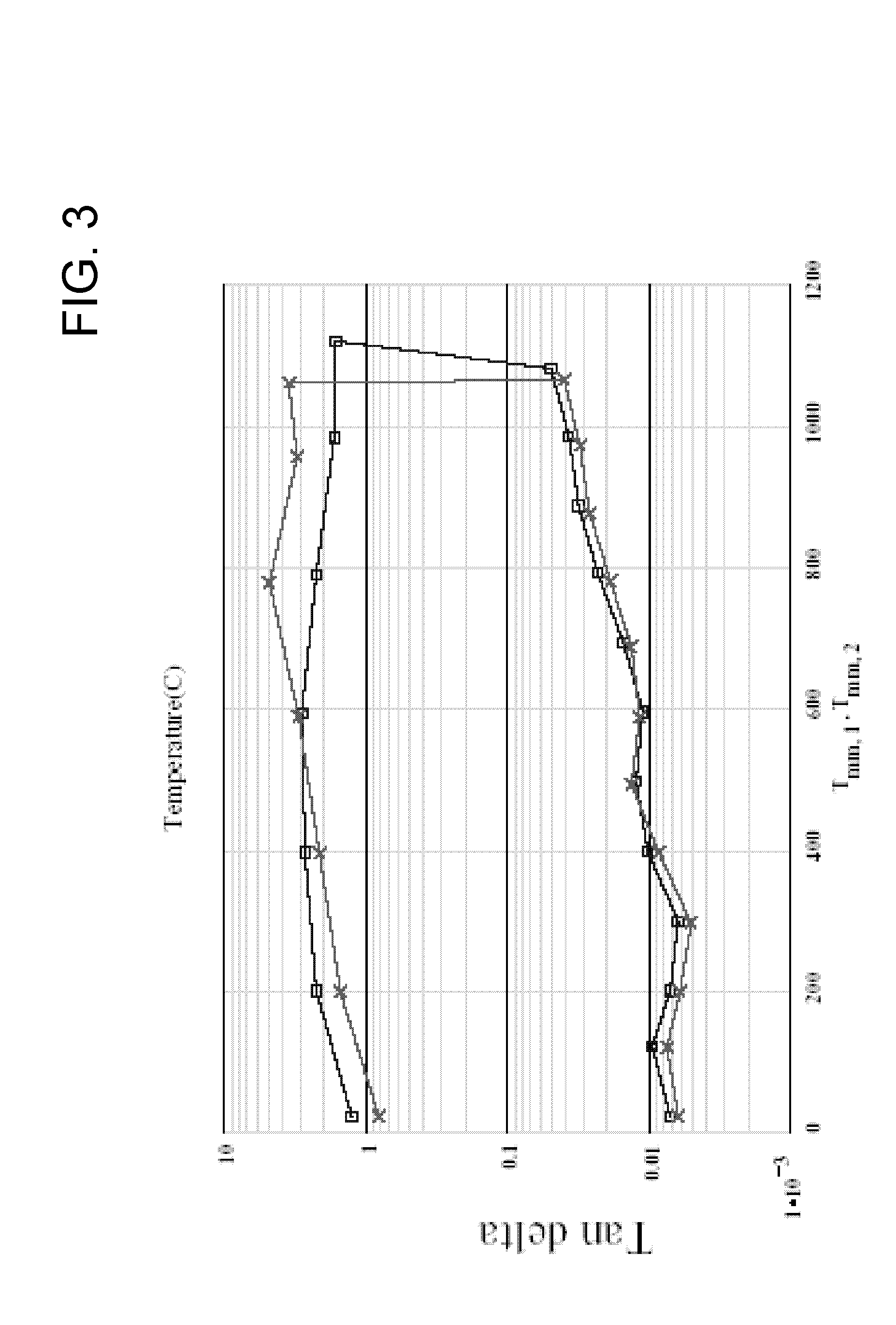Process of microwave brazing with powder materials
- Summary
- Abstract
- Description
- Claims
- Application Information
AI Technical Summary
Benefits of technology
Problems solved by technology
Method used
Image
Examples
Embodiment Construction
[0015]The invention will be described with specific reference to processing of components for a gas turbine engine, and particularly the fabrication and repair of such components with a braze material. However, the invention has application to a variety of components, materials, and processes other than those discussed, and such variations are within the scope of this invention.
[0016]FIGS. 1 and 2 depict embodiments of this invention, in which consistent reference numbers are used to identify functionally similar structures. FIG. 1 schematically represents a mass 10 of filler metal particles 12 between and contacting opposing surfaces of two substrates 14 and 24 to be metallurgical joined by the particles 12, and FIG. 2 schematically represents a mass 10 of filler metal particles 12 within a defect in a surface of a substrate 14 for the purpose of repairing the surface. In both FIGS. 1 and 2, the particles 12 are shown as being contained within a binder 30 that, according to known b...
PUM
| Property | Measurement | Unit |
|---|---|---|
| Fraction | aaaaa | aaaaa |
| Percent by mass | aaaaa | aaaaa |
| Percent by mass | aaaaa | aaaaa |
Abstract
Description
Claims
Application Information
 Login to View More
Login to View More - R&D
- Intellectual Property
- Life Sciences
- Materials
- Tech Scout
- Unparalleled Data Quality
- Higher Quality Content
- 60% Fewer Hallucinations
Browse by: Latest US Patents, China's latest patents, Technical Efficacy Thesaurus, Application Domain, Technology Topic, Popular Technical Reports.
© 2025 PatSnap. All rights reserved.Legal|Privacy policy|Modern Slavery Act Transparency Statement|Sitemap|About US| Contact US: help@patsnap.com



